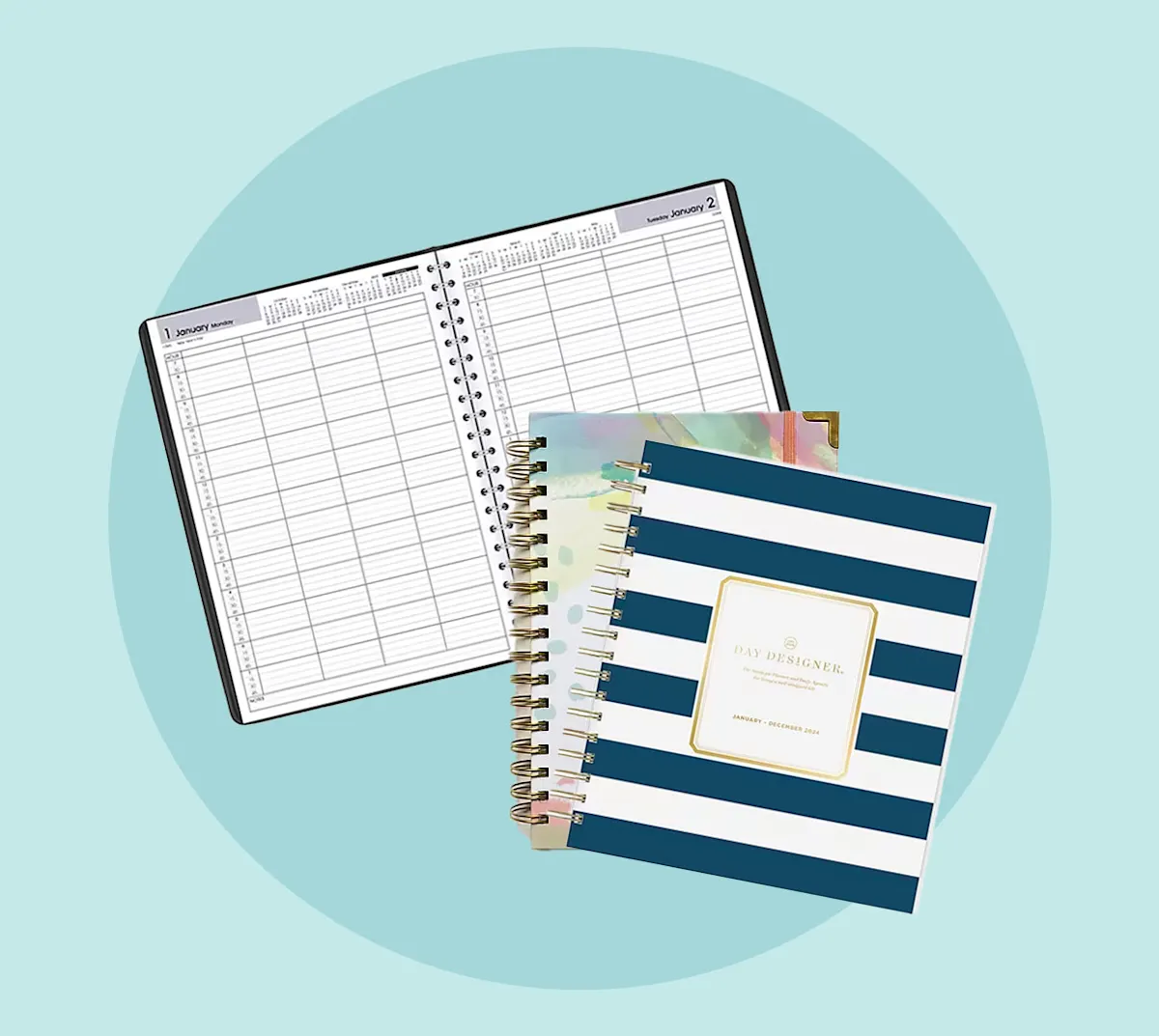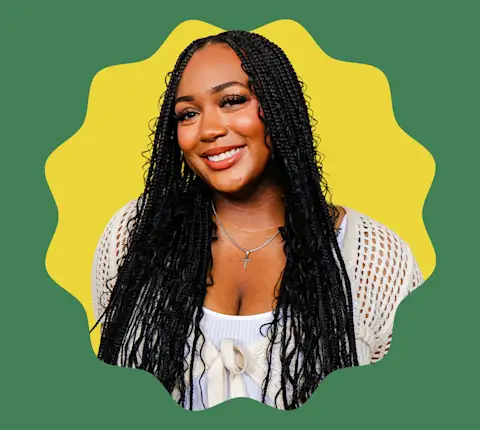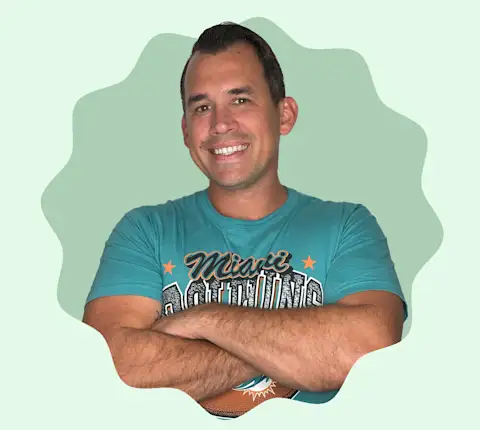There’s something about a shiny new planner that sets my heart aflutter — maybe it’s the promise of an organized, peaceful fresh start — but reporting this story broke my brain, in the best way. I asked a variety of organizational and planning experts questions about a finite paper product, and received answers about time, life, priorities, and meaning.
When a planner is working at its best, it allows you “to be able to say yes to the things that matter in life — while also getting your work done,” explains Paige Shockley, a professional organizer who helps clients build sustainable systems to stay organized. Who wouldn’t want that?
A planner is a super personal thing because it touches on the way we spend our time, which is another way to measure units of our singularly precious lives. When we fill it out, we are forced to be “intentional with time, which is such an important resource,” Shockley says. “What do I want more of in my life and how can I schedule that in? If I don’t fill up my calendar, somebody else will do it for me.”
“The best planner is one you look at and reference consistently,” says Katelyn Denning, a life coach for working moms. “Sometimes I even suggest you start with some scratch paper or an old notebook to establish the habit first and then invest in the beautiful planner second, once you've proven to yourself that you have a habit of planning.”
Once you’re ready to upgrade, here’s where to start:
Best for Students: Traditional Academic Planner
At-a-Glance DayMinder from Staples
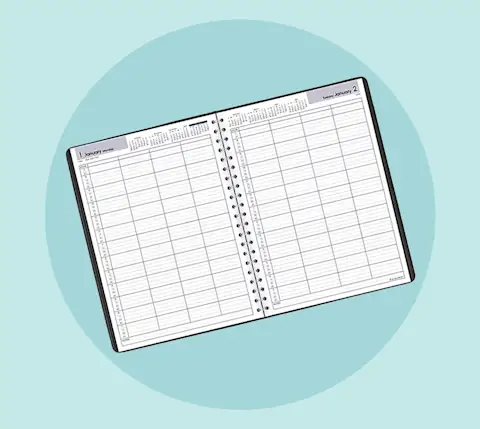
Leslie Josel is the owner of Order Out of Chaos, a coaching business that helps students and their parents plan. “Here’s what I tell my students,” Josel says. “It’s all well and good to know what you must do, but a proper academic planner helps you visualize what’s ahead so you can plan for and manage commitments and know when you have time to do them.”
In other words, “you must be able to see your time to learn how to manage it,” says Josel, noting that an academic planner is an ideal tool for helping students see days, weeks, and months ahead. “I can’t count how many times I’ve heard a student say, ‘I need to see everything in one place.’ Seeing helps us plan, prioritize, and stay on task and track.”
With unruled daily blocks, plus past, current, and future-month calendar references, students (and anyone!) can see both a short- and longer-term view with the At-a-Glance DayMinder planner.
Best for the Perfectionist: A Planner with Space for the Details
Day Designer planner from Staples
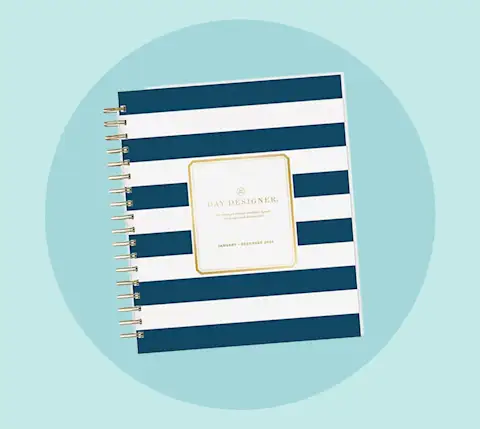
If having everything dated, timed, and preferably color-coded makes you feel like life is under control, I see you. A planner with bells and whistles, like the Day Designer, lets you flex your Type-A muscles by considering both the big picture and the nitty gritty. Look for planners with features that feel meaningful for you, like to-do checklists, space for each week's priorities, as well as space for notes and gratitude.
But don’t keep your planner too neat. Denning strongly encourages you to “make it messy!” It's a work in progress.
“It's meant to be your brain on paper,” she says. “Add notes, and color, and doodles, and checkboxes! It shouldn't be tidy and perfect. Your planner wants to be used.”
And if you miss a day or a week or even a month, you can still get back to it. “As you're learning to be consistent, that part might be a little messy too,” says Denning. “And that's okay.”
Best for the Free Spirit: A Blank Planner
dream.plan.do. Weekly & Monthly Planner from Staples
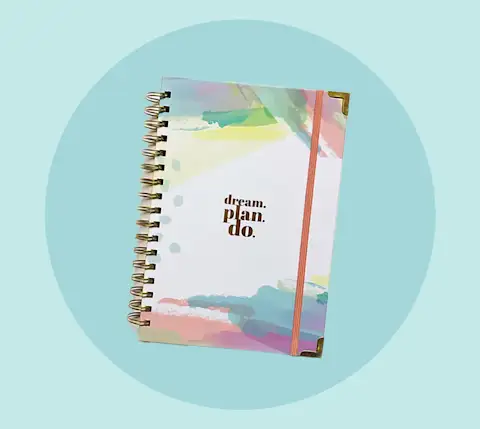
When it comes to choosing a planner for herself, Denning opts for an undated planner.
“I want to be able to start and end whenever I need to,” she says. “And I don't want to be ‘punished’ for taking a week off from planning when I'm on vacation or just need a break. Undated options allow me to fill up every single page.”
Denning takes the time to write out her schedule each day, which helps her grasp how she is going to be spending her time and energy.
She also advises her clients to check in with their planners weekly and monthly. This bigger-picture planning is about choosing priorities and focus areas. Ask yourself questions like: What are the projects and goals I want to move forward this week? What are the upcoming deadlines and deliverables that are due? How full or open is my week and what's my energy going into it?
“Taking that time to preview and plan for my time and energy is so empowering and I love how the paper planner forces my brain to slow down and take that extra time to plan,” says Denning.
Best for Everyone: The One You Find Beautiful and Useful
The look and feel of a planner is so personal. I love planners with plenty of white space. For me, room for notes, brain dumps, and doodles is essential. Depending on my mood, I’ve gone for floral, richly colored covers and geometric, minimalist ones. I’m going to be looking at it most days and carrying it around almost everywhere I go, so the more I can love it, the better.
"When a planner is working at its best, it allows you 'to be able to say yes to the things that matter in life — while also getting your work done'."
You know a planner is working when you look at the day, week, or month ahead and “feel calm, light, and happy,” according to Shockley.
Shockley urges you to ask yourself: “Are the things on my schedule adding up to what I want my life to look like?” If you can answer yes, you’re using your planner right.
Shop RetailPHOTO CREDIT: Courtesy of Staples


